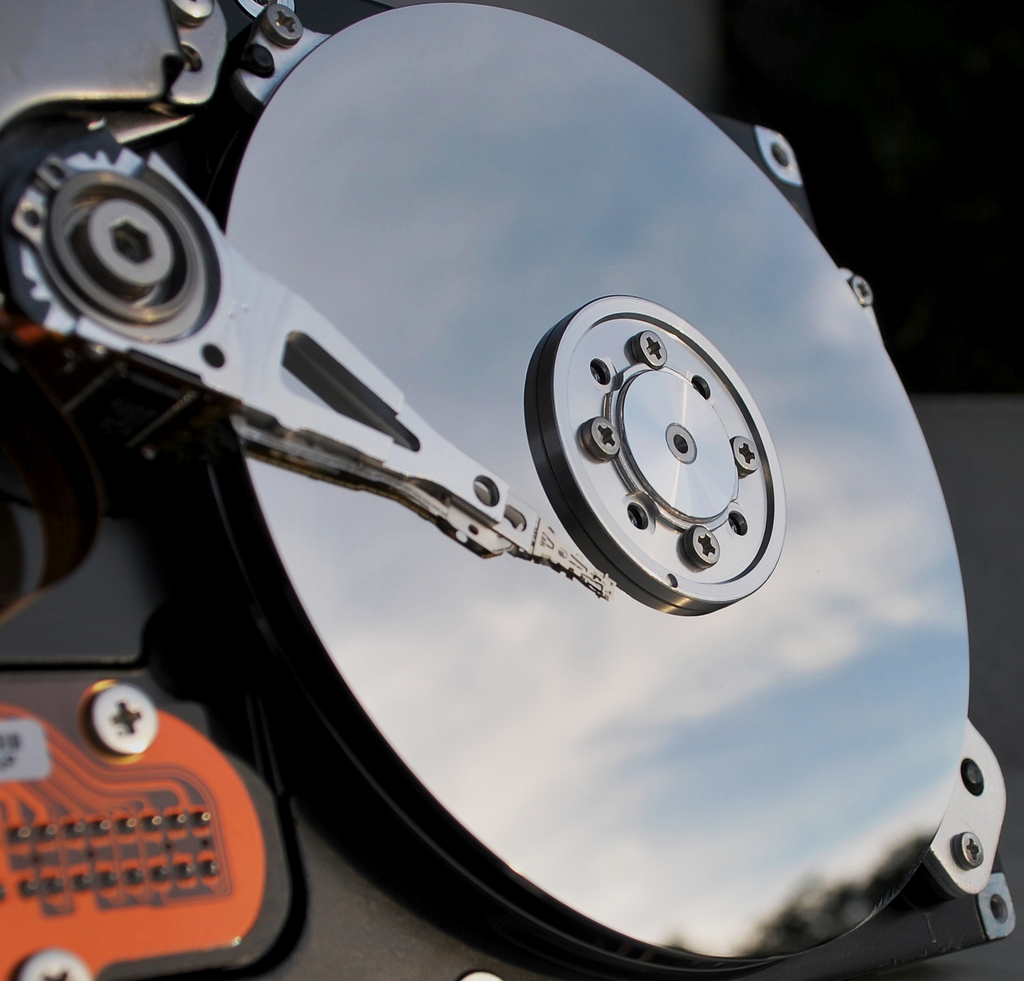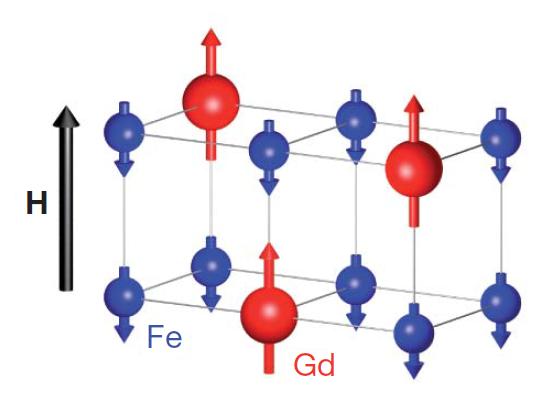
Optical switching might make computer hard drives faster. Photo by pobre.ch via flickr.
Magnetism remains the most developed way to store digital information. The giga and terabytes of computer hard drives as well as the magnetic stripes that still are used for credit cards or hotel room keys, all function with the help of magnetic fields. There, the direction of the magnetic fields, up or down, expresses the digital 0s and 1s that make up the computer bits and bytes.
As the amount of data we store on hard drives continues to increase, it is of course desirable that read and write speeds follow that trend. As far as writing data is concerned, however, switching the magnetisation is not that easy as all the individual magnetic fields of the majority of atoms that make up a bit, their so-called magnetic moment, has to be reversed. Given that these magnetic moments are interconnected through magnetic forces, such reversals aren’t very fast.
Modern hard drives manage to write about 1 billion bits per second. That’s a nanosecond per bit. In the lab, switching speeds are even faster, achieving hundreds of picoseconds to nanoseconds. But while this sounds like a pretty fast process, it is orders of magnitude slower than many other electronic processes in a crystal. Yet, magnets needn’t be that slow. What we have considered so far is switching magnetization by an external magnetic field, such as that generated in the write head of a hard drive. This isn’t the only possibility. If ultrashort optical laser pulses are used instead, magnetism can be switched a hundred times faster, on the order of a picosecond.
How does this work? In a paper published in advance on the Nature website this week, Ilie Radu, Theo Rasing from Radboud University in Nijmegen and others have investigated the details of the optical switching proceeds for a particular class of magnets, antiferromagnets.
What we know already is that these optical pulses don’t directly switch the magnetic moments from up to down or vice versa. Rather, the electrons absorb the energy of the short laser pulses, which are typically tens of femtoseconds short (1,000 femtoseconds are 1 picosecond, 1,000 picoseconds are 1 nanosecond) – 60 femtoseconds in the present case. The heating from the short laser pulse is sufficient to alter the interaction between the magnetic moments. Effectively, due to heating it’s almost as if the magnet is ‘rebooted’ and pushed collectively into the new magnetic state.

The magnetic moments of Fe and Gd ions. Reprinted by permission from Nature doi: 10.1038/nature09901 (2011).
In antiferromagnets the situation becomes more interesting, as there are two competing magnetic orders. Take the antiferromagnet GdFeCo studied by Rasing and colleagues. The magnetic moments of the Gd atoms are opposite to those of the Fe/Co ones. The question is how these opposite moments reverse their direction simultaneously.
To this end, the researchers used a detection technique that can track the magnetism of different elements separately. And what they discovered is that the magnetizations of the opposing magnetic moments don’t switch simultaneously. Instead, first the magnetisation of the Fe atoms reverses, followed later by that of the Gd atoms. For a brief moment, the material is a ferromagnet.
From a fundamental perspective, it is intriguing to see how different these atoms behave. Normally, the magnetic interactions between Fe and Gd atoms cause their magnetic moments to always arrange in opposite direction. Owing to heating, this interaction is overcome, and the switching occurs on individual time scales.
Looking ahead it will be interesting to see how this insight could be used to tweak the switching times of magnets – perhaps not only those of antiferromagnets. Who knows, maybe eventually insight from such studies could provide guidance how, perhaps by adding a small quantity of other magnetic elements, magnets could be switched even faster with light. There certainly is still plenty of room to speed up computer hard drives!
Reference:
Radu, I., Vahaplar, K., Stamm, C., Kachel, T., Pontius, N., Dürr, H., Ostler, T., Barker, J., Evans, R., Chantrell, R., Tsukamoto, A., Itoh, A., Kirilyuk, A., Rasing, T., & Kimel, A. (2011). Transient ferromagnetic-like state mediating ultrafast reversal of antiferromagnetically coupled spins Nature DOI: 10.1038/nature09901


March 30, 2011 at 23:03
How is the inverse of 1 billion bits per second 1 microsecond per bit?
March 30, 2011 at 23:16
Totally right – is corrected now, thanks Rob!
August 24, 2011 at 15:21
Thanks for using my photo 🙂
August 24, 2011 at 19:29
No, thank you Norlando. It is quite a striking photo. Thanks for putting it on flickr with this creative commons licence!
November 7, 2011 at 06:19
Joerg, the photo you picked was a smart choice, I stumbled on your blog and had to look closer thanks to this pic. I didn’t realize that it was actually for a computer and not decoration 🙂 Magnets are so cool and it is amazing how we use them for everything from the car door to jewelry. Thanks for your post 🙂 Lisa